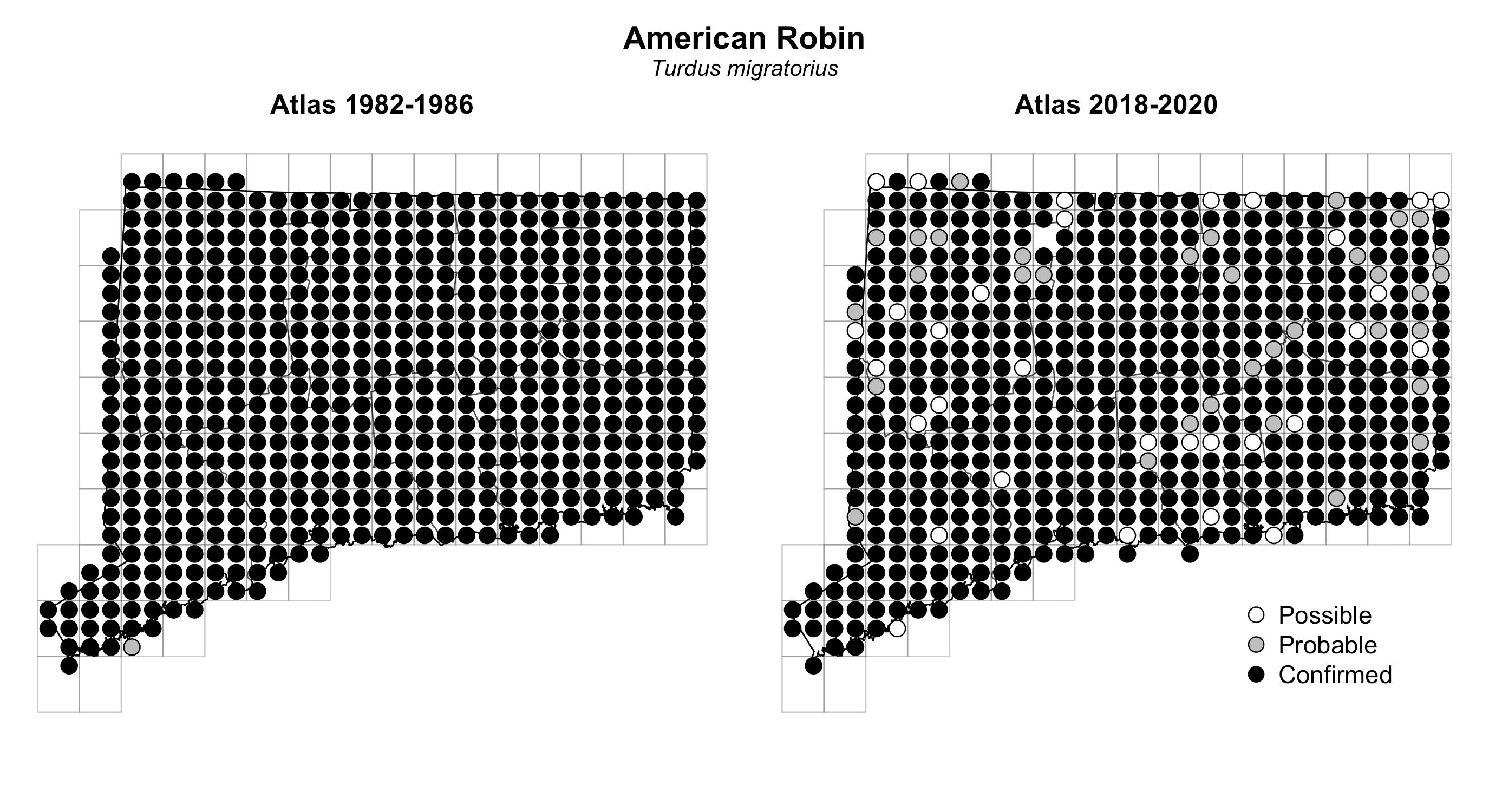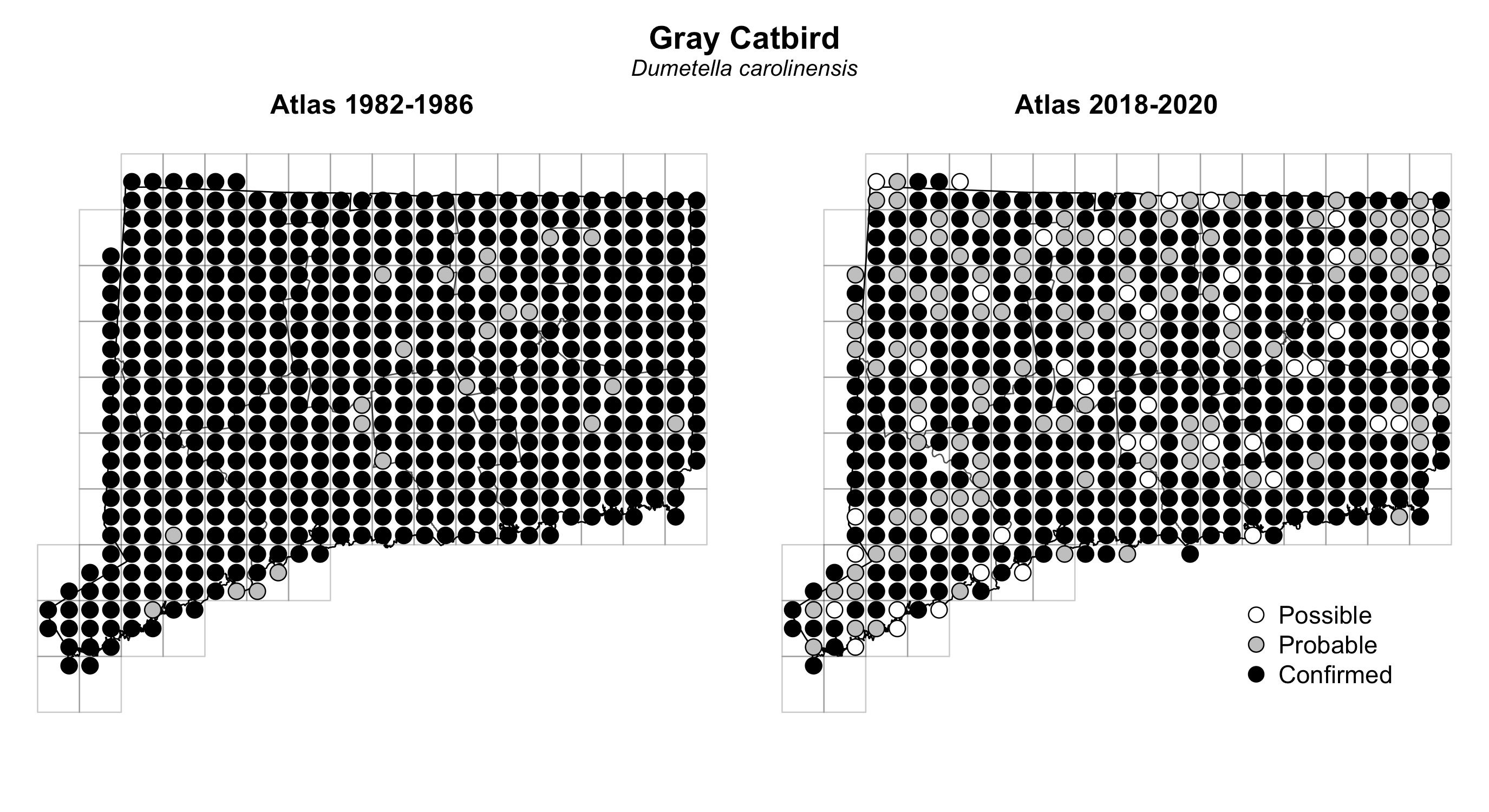In most posts this year, I’ve focused on species where we think we lack complete information, such as house finches and rock pigeons. But there are some species among the dozen that we feel could breed in any block that have already been found in almost all of them.
Last May, I wrote about American robins, which were found in almost every block in the 1980s, and are one of the most widely reported species from the current project. At that time, they were still missing from a scattering of blocks, but now there are only a handful with no records at all:
 Breeding atlas reports of American robins in Connecticut during the 1980s (left) and between 2018 and May 2021 (right). All data are preliminary and will be subject to review; a few of the most recent reports may not yet be included in our maps.
Breeding atlas reports of American robins in Connecticut during the 1980s (left) and between 2018 and May 2021 (right). All data are preliminary and will be subject to review; a few of the most recent reports may not yet be included in our maps.
Similarly, by this time last year gray catbirds had been widely reported, with records in a majority of blocks. Again, however, there were a scattering of blocks with no records, and many, many more, in which breeding had not been confirmed. Late summer efforts to confirm nesting in all species made a huge difference and we now have confirmations in the majority of blocks.
 Breeding atlas reports of gray catbirds in Connecticut during the 1980s (left) and between 2018 and May 2021 (right). All data are preliminary and will be subject to review; a few of the most recent reports may not yet be included in our maps.
Breeding atlas reports of gray catbirds in Connecticut during the 1980s (left) and between 2018 and May 2021 (right). All data are preliminary and will be subject to review; a few of the most recent reports may not yet be included in our maps.
For both species, there are still a few gaps to fill, of course, and confirmations to obtain. But, both of these species are well into their first round of breeding this summer, with young robins starting to emerge, and parents of both species increasingly being seen carrying food back and forth to nests. So perhaps these are two species that we really can confirm in every block.